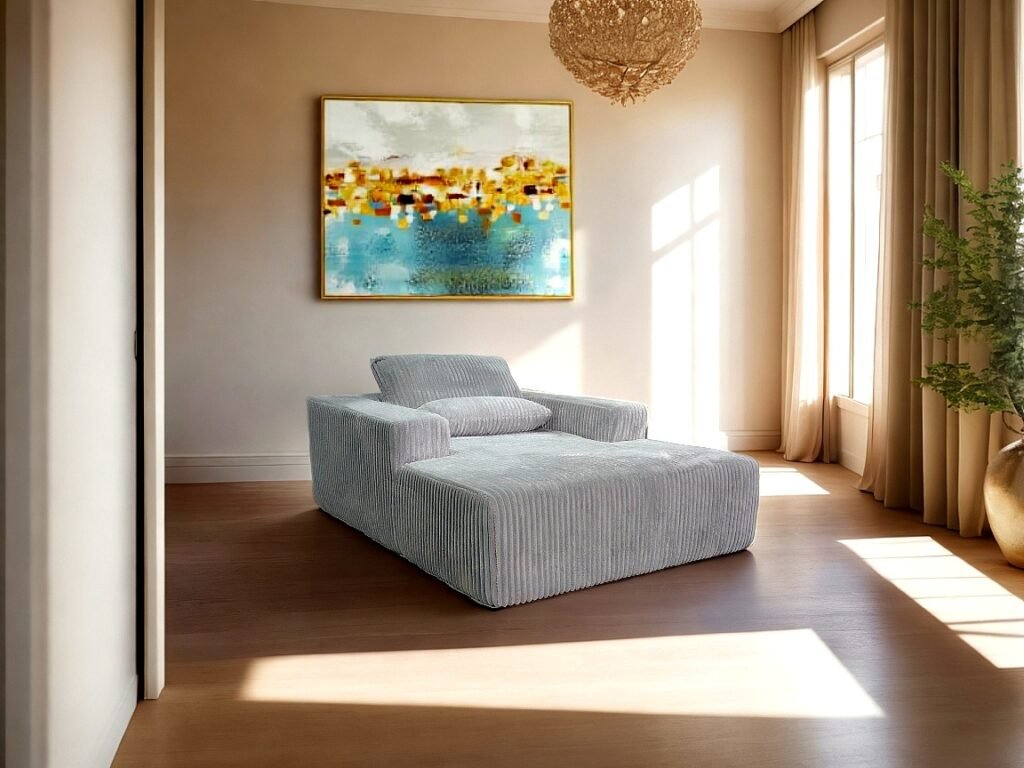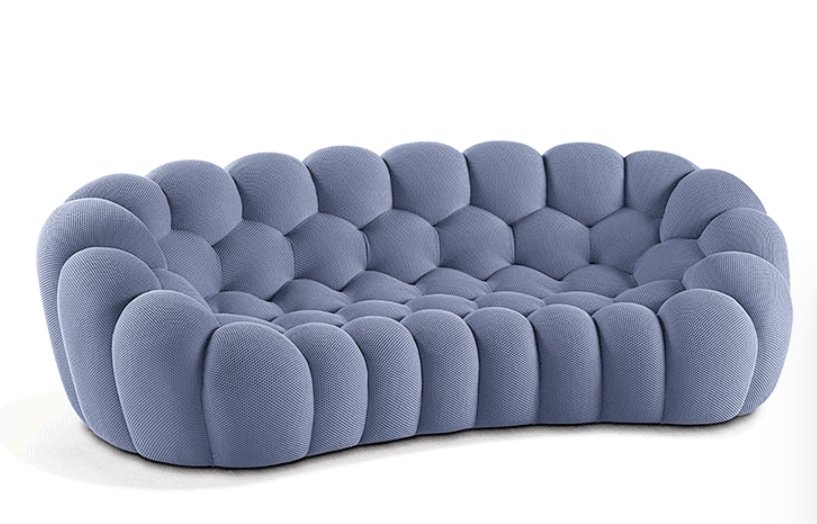In today's fast-paced world, where urban living spaces are shrinking and convenience is king, compressed sofas have become a game-changer in furniture design and delivery. These innovative pieces of furniture are engineered to be compressed, vacuum-packed, and shipped in compact boxes, making transportation and installation remarkably easier. However, while much attention is often given to the sofa’s internal structure—such as frame materials and foam density—the role of the sofa fabric in influencing both the compression performance and the comfort of the sofa is equally vital.
This article delves deep into how different types of sofa fabrics impact the ability of a sofa to withstand compression and how they affect the overall comfort experienced by users. Understanding these factors will empower consumers, interior designers, and manufacturers to make informed choices when selecting fabrics for compressed sofas, ensuring longevity, aesthetic appeal, and user satisfaction.


The Concept and Benefits of Compressed Sofas
Compressed sofas, sometimes referred to as roll-packed or vacuum-packed sofas, are designed to reduce their size dramatically during shipping and storage. This is achieved by compressing the sofa’s cushions and sometimes the frame itself, then sealing it in airtight packaging. Upon unpacking, the sofa expands back to its original shape, ready for use.
This compression technology offers several benefits:
- Space Efficiency: Compressed sofas take up less volume during transportation, reducing shipping costs and carbon footprint.
- Ease of Handling: Lightweight, compact packaging makes it easier for customers to move and set up their furniture without professional help.
- Cost Savings: Lower logistics and storage expenses translate to more affordable pricing for consumers.
- Sustainability: Reduced packaging and transportation emissions contribute to eco-friendly furniture solutions.
Despite these advantages, the compression process places unique demands on the sofa’s materials, especially the fabric. The fabric must be resilient enough to endure the mechanical stresses of compression and decompression without damage, while also maintaining a comfortable and appealing surface for users.
Why Sofa Fabric Matters in Compression Performance
When a sofa is compressed, the fabric covering undergoes intense mechanical strain. It is folded, stretched, and pressed tightly, often for extended periods during shipping and storage. Not all fabrics respond equally well to these conditions.
The fabric’s ability to withstand compression depends on several key properties:
- Elasticity: Fabrics with good stretch and recovery can accommodate deformation during compression and spring back to their original shape without permanent creases or damage.
- Tensile Strength: The fabric must resist tearing or fiber breakage under tension.
- Abrasion Resistance: Compression and unpacking can cause friction, so fabrics that resist wear and pilling are preferred.
- Dimensional Stability: Some fabrics shrink or distort after compression, leading to fitting issues or unsightly wrinkles.
- Moisture Management: During shipping, moisture can accumulate inside packaging. Fabrics that breathe well help prevent mold, mildew, and odors.
Synthetic performance fabrics, such as those made from polyester or nylon blends, are often engineered with these properties in mind. They tend to be more durable and elastic than natural fibers, making them well-suited for compressed sofas. However, natural fabrics like cotton or linen, prized for their comfort and breathability, may struggle with compression demands unless specially treated.
The Impact of Fabric on Comfort
Beyond durability and compression resilience, the fabric is the primary interface between the user and the sofa. It heavily influences the tactile experience and overall comfort level. Comfort is subjective but can be broken down into several measurable factors related to fabric:
- Softness: The tactile feel of the fabric against the skin. Soft fabrics like chenille or velvet create a cozy, inviting sensation.
- Texture: Some people prefer smooth, sleek surfaces like leather, while others enjoy textured or napped fabrics.
- Breathability: Breathable fabrics allow air circulation, which helps regulate temperature and reduce sweating during extended sitting.
- Temperature Regulation: Some fabrics retain heat, making them feel warm and cozy, while others stay cool and dry.
- Hypoallergenic Properties: For sensitive individuals, fabrics that resist dust mites and allergens improve comfort.
- Maintenance and Cleanliness: Fabrics that are easy to clean and resistant to stains contribute to long-term comfort by maintaining a fresh appearance.
In compressed sofas, the fabric must balance these comfort attributes with the practical demands of compression. For example, a very plush fabric may feel luxurious but could be more prone to creasing or damage during compression.


Detailed Comparison of Common Sofa Fabrics for Compressed Sofas
To better understand how different fabrics perform under compression and how they affect comfort, the following table summarizes key characteristics of popular sofa fabrics:
| Fabric Type | Compression Performance | Comfort Characteristics | Durability & Maintenance | Typical Use Case |
|---|---|---|---|---|
| Polyester (Performance Fabric) | High elasticity and durability; resists wrinkles and tears during compression | Moderate softness; can be treated for breathability | Highly durable; stain and fade resistant; easy to clean | Ideal for high-use compressed sofas, families, commercial |
| Chenille | Moderate elasticity; may wrinkle slightly under compression | Very soft and plush; excellent tactile comfort | Moderate durability; requires gentle care | Luxury compressed sofas, residential use |
| Cotton/Linen | Low elasticity; prone to wrinkling and creasing under compression | Highly breathable; soft and natural feel | Moderate durability; may stain easily | Best for non-compressed or lightly compressed sofas |
| Leather (Genuine/PU) | Low elasticity; can crack if compressed improperly | Smooth, cool surface; less breathable | Durable but requires maintenance; sensitive to sharp folds | Premium compressed sofas where style is key |
| Velvet | Moderate elasticity; can crush under compression | Luxuriously soft; warm and cozy | Moderate durability; prone to marking | High-end compressed sofas, boutique settings |
Polyester and Performance Fabrics
Polyester fabrics, especially those designed as “performance fabrics,” are the most common choice for compressed sofas. Their synthetic fibers provide excellent stretch and recovery, allowing the fabric to endure compression without permanent deformation. They are also resistant to stains, fading, and abrasion, making them ideal for everyday use.
Performance fabrics can be engineered with additional finishes to improve breathability and moisture wicking, addressing one of the common drawbacks of synthetic materials. Their easy maintenance—often requiring only simple spot cleaning—makes them popular in both residential and commercial settings.
Chenille
Chenille is a soft, plush fabric known for its cozy texture and inviting appearance. It offers moderate elasticity, which means it can tolerate compression to some extent but may develop wrinkles or creases if compressed for long periods. Chenille requires more delicate care and is less resistant to abrasion than polyester, so it’s best suited for compressed sofas intended for gentle use or luxury residential environments.
Cotton and Linen
Natural fibers like cotton and linen are prized for their breathability and softness. They provide excellent comfort in terms of temperature regulation and skin-friendliness. However, these fabrics have low elasticity and are prone to wrinkling and creasing when compressed. They also tend to stain more easily and require more maintenance.
For compressed sofas, cotton and linen are less common unless blended with synthetic fibers or treated with special finishes to improve durability and compression resistance.
Leather (Genuine and PU)
Leather sofas exude luxury and sophistication. Genuine leather is durable and ages well, developing a unique patina over time. However, leather has very low elasticity and can crack or crease permanently if compressed improperly. PU leather (synthetic leather) offers similar aesthetics at a lower cost but is generally less durable.
Leather sofas require careful packaging and handling during compression to avoid damage. They are less breathable, which can affect comfort in warm climates, but their smooth surface is easy to clean.


Velvet
Velvet is a sumptuous fabric with a rich texture and warm feel. It offers moderate elasticity but can crush or mark under compression, which may affect appearance. Velvet requires careful maintenance to avoid staining and pile damage.
Velvet is often chosen for high-end compressed sofas where aesthetics and tactile comfort are prioritized, and where compression cycles are infrequent.
Foam Density and Fabric Interaction
The foam inside sofa cushions plays a crucial role in how the fabric performs during and after compression. Foam density affects the sofa’s ability to regain its shape and provide support.
Higher density foams (usually above 2.5 pounds per cubic foot) offer better resilience and support, which helps the fabric maintain a smooth surface without sagging or wrinkling. When paired with an elastic, durable fabric, this combination ensures that the sofa recovers well after compression and offers lasting comfort.
Lower density foams may compress more easily but can lead to fabric bunching or sagging, diminishing both appearance and comfort. Therefore, selecting the right foam density to complement the fabric is essential for optimal sofa performance.
Fabric Treatments and Innovations for Compression Sofas
Advances in textile technology have introduced various treatments and fabric innovations that enhance the suitability of fabrics for compressed sofas:
- Stretch Finishes: Some fabrics are treated with stretch-enhancing finishes that improve elasticity and recovery.
- Anti-wrinkle Treatments: These finishes help fabrics resist creasing during compression and unpacking.
- Moisture-Wicking and Antimicrobial Coatings: These improve breathability and hygiene, reducing odor and mold risks during shipping.
- Stain-Resistant Finishes: Protect fabrics from spills and dirt, simplifying maintenance.
- Eco-Friendly Fabrics: Made from recycled fibers or sustainable materials, these fabrics align with growing consumer demand for green products without compromising performance.
Manufacturers like Modular Sofas integrate these innovations to deliver compressed sofas that excel in both compression resilience and user comfort.
Real-World Considerations for Consumers
When purchasing a compressed sofa, consumers should consider several practical aspects related to fabric choice:
- Lifestyle and Usage: Families with children or pets benefit from durable, stain-resistant performance fabrics. Luxury fabrics may be better suited for low-traffic areas.
- Climate: Breathable fabrics are preferable in hot, humid regions, while warmer fabrics like velvet suit cooler climates.
- Maintenance: Consider how much time and effort you can devote to cleaning and care.
- Aesthetics: Fabric color, pattern, and texture should complement your interior design.
- Budget: Performance fabrics often provide the best value in terms of durability and maintenance, while natural and luxury fabrics may cost more.
Testing fabric samples at home, if possible, and consulting with experts can help ensure the fabric meets your expectations for both comfort and compression performance.
Modular Sofas: Combining Innovation with Comfort
At Modular Sofas, we specialize in creating compressed sofas that marry cutting-edge compression technology with carefully selected fabrics. Our sofas use high-density foams and frames engineered for resilience, paired with fabrics chosen for their elasticity, durability, and comfort.
We offer a range of fabric options—from high-performance polyesters to luxurious chenille and velvet—allowing customers to find the perfect balance for their lifestyle and aesthetic preferences. Our commitment to quality ensures that every sofa not only compresses efficiently for shipping but also expands to deliver lasting comfort and style in your living space.
Conclusion
The fabric covering of a compressed sofa is far more than just a decorative element. It is a critical component that affects how well the sofa withstands compression, how it recovers after unpacking, and how comfortable it feels during everyday use. Selecting the right fabric involves balancing elasticity, durability, breathability, and tactile comfort.
Performance fabrics made from synthetic fibers currently offer the best overall solution for compressed sofas, providing excellent compression resilience, easy maintenance, and good comfort. Natural and luxury fabrics bring unmatched softness and aesthetic appeal but may require more careful handling and maintenance.
By understanding the complex relationship between sofa fabric, foam density, and compression technology, consumers and manufacturers can make smarter choices that enhance the longevity and enjoyment of compressed sofas. Modular Sofas continues to lead the way in delivering innovative, comfortable, and stylish compressed furniture solutions tailored to modern living.